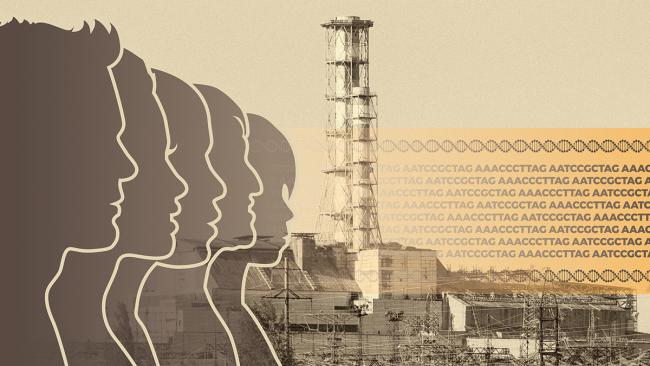The genetic effects of Chernobyl radiation exposure
May 4, 2021
The genetic effects of Chernobyl radiation exposure
At a Glance
- Researchers found no evidence that radiation exposure from the Chernobyl accident caused genetic changes that were passed on to children.
- Scientists also found that thyroid cancers arising after radiation exposure were more likely to have certain types of DNA damage.
- The results further our understanding of the genetic effects of radiation exposure.

In April 1986, an accidental reactor explosion at the Chernobyl nuclear power plant in present-day Ukraine exposed millions of people in the surrounding area to radioactive contaminants. “Cleanup” workers were also exposed. Such radiation is known to cause changes, or mutations, in DNA.
Two studies examining the genetic changes in those in the area at the time of the accident and their children provide new insights into the health effects of radiation exposure. The studies were led by researchers at NIH’s National Cancer Institute (NCI). Results were published on April 22, 2021, in Science.
One of the studies, led by Drs. Stephen Chanock and Meredith Yeager, examined whether radiation exposure causes genetic damage that can be passed to offspring. The researchers sequenced the genomes of 130 children and their parents. The parents had either worked on cleaning up after the accident or were evacuated from the nearby town. The children were all born at least 46 weeks after the accident and up to the year 2002. The scientists estimated each parent’s radiation exposure based on parents’ reports of their activity and knowledge of environmental radiation around the power plant.
The team looked for random, spontaneous mutations that occurred in the parents’ sperm and eggs. Such “de novo” mutations (DNMs) will appear in children’s genomes but not in either parent’s. The number of DNMs found in the children was similar to that in the general population. This suggests that people exposed to radiation from the Chernobyl accident didn’t pass on any adverse effects to their children.
“We view these results as very reassuring for people who were living in Fukushima at the time of the accident in 2011,” Chanock notes. “The radiation doses in Japan are known to have been lower than those recorded at Chernobyl.”
Exposure to radioactive iodine (131I) from the Chernobyl accident caused an increased risk of thyroid cancer. 131I gives off radiation that breaks the chemical bonds in DNA. Mutations can form when the body attempts to repair these bonds. In the second study, led by Chanock and Dr. Lindsay Morton, the researchers sequenced the genomes of thyroid cancers from 359 people who were exposed to ionizing radiation from the accident either as children or in the womb. Thyroid cancers from 81 unexposed people born more than nine months after the accident were used for comparison.
The researchers found that tumors in those exposed to higher radiation doses, particularly at younger ages, had more mutations arising from DNA double-strand breaks—when both DNA strands are broken. Most commonly, these mutations were found in all the cells in the tumor. This suggests that the radiation-related damage occurred early in the tumor’s development.
For nearly all the tumors, the researchers were able to identify specific mutations in “driver” genes that enabled the tumors to grow and survive. Most of these were in genes previously associated with thyroid cancer. At higher radiation doses, driver mutations were more likely to result from a particular type of error that’s introduced when DNA double-strand breaks are repaired.
These results provide a foundation for further studies of the associations between radiation dose, age, and cancer risk. They also illustrate the value of the biospecimens that were collected by researchers in Ukraine after the accident.
“These scientists recognized that there would be substantial advances in technology in the future,” Morton says, “and the research community is now benefiting from their foresight.”
—by Brian Doctrow, Ph.D.
Related Links
- Drugs Block Deadly Harm from Radiation Exposure
- Accidents at Nuclear Power Plants and Cancer Risk
- Get the Facts about Exposure to I-131 Radiation
- Radiation
- Thyroid Cancer Treatment (Adult)
References
Lack of transgenerational effects of ionizing radiation exposure from the Chernobyl accident. Yeager M, Machiela MJ, Kothiyal P, Dean M, Bodelon C, Suman S, Wang M, Mirabello L, Nelson CW, Zhou W, Palmer C, Ballew B, Colli LM, Freedman ND, Dagnall C, Hutchinson A, Vij V, Maruvka Y, Hatch M, Illienko I, Belayev Y, Nakamura N, Chumak V, Bakhanova E, Belyi D, Kryuchkov V, Golovanov I, Gudzenko N, Cahoon EK, Albert P, Drozdovitch V, Little MP, Mabuchi K, Stewart C, Getz G, Bazyka D, Berrington de Gonzalez A, Chanock SJ. Science. 2021 Apr 22:eabg2365. doi: 10.1126/science.abg2365. Online ahead of print. PMID: 33888597.
Radiation-related genomic profile of papillary thyroid cancer after the Chernobyl accident. Morton LM, Karyadi DM, Stewart C, Bogdanova TI, Dawson ET, Steinberg MK, Dai J, Hartley SW, Schonfeld SJ, Sampson JN, Maruvka Y, Kapoor V, Ramsden DA, Carvajal-Garcia J, Perou CM, Parker JS, Krznaric M, Yeager M, Boland JF, Hutchinson A, Hicks BD, Dagnall CL, Gastier-Foster JM, Bowen J, Lee O, Machiela MJ, Cahoon EK, Brenner AV, Mabuchi K, Drozdovitch V, Masiuk S, Chepurny M, Zurnadzhy LY, Hatch M, Berrington de Gonzalez A, Thomas GA, Tronko MD, Getz G, Chanock SJ. Science. 2021 Apr 22:eabg2538. doi: 10.1126/science.abg2538. Online ahead of print. PMID: 33888599.
Funding
NIH’s National Cancer Institute (NCI); Gerstner Family Foundation; Academia Sinica; Japanese Ministry of Health, Labor and Welfare (MHLW); US Department of Energy (DOE).


